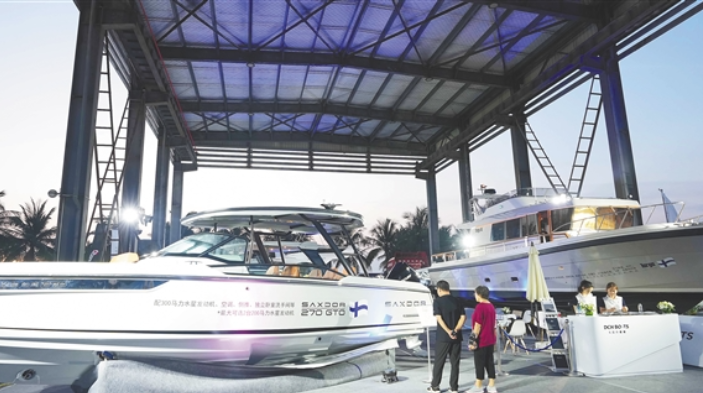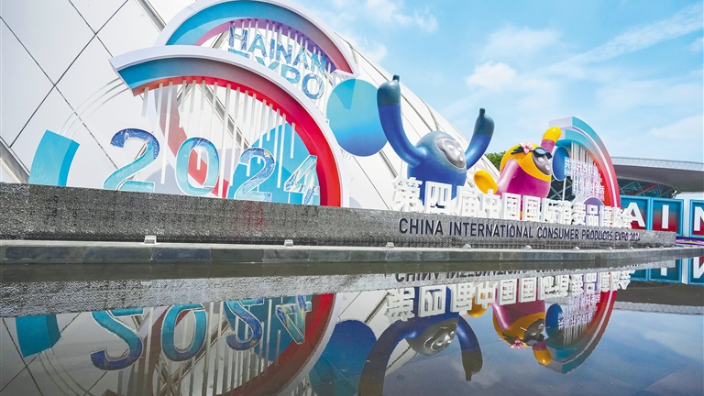By continuing to browser our site and use the services you agree to our use of cookies, Privacy Policy and Terms of Use. You can change your cookie settings through your browser.
According to the traditional Chinese lunar calendar, the year is divided into 24 solar terms. On September 23rd of this year, Qiufen (also called “Autumnal Equinox”) and the 4th Chinese Farmers’ Harvest Festival both began. Owing to favorable conditions in terms of sunlight, temperature and rainfall, residents of Hainan are able to grow crops all year round. Although some crops can be harvested twice (or even three times) per year, the majority of harvest happen around this time and the ripe colors of rice paddies and vegetable fields cover the island with a gorgeous patchwork of color.
Rice
Flowing through vast golden fields of rice near Yunlong Town’s 36 Quxi Wetlands Park, the “36 sinuous curves” of the river are lit up by sunset. The scene is so beautiful that, even with modern harvesters shuttling back and forth, it’s almost like something out of a landscape painting.

Pomeloes
The seedless honey pomeloes of Chengmai County are just starting to come ripe. Pushing forward the implementation of “Village Revitalization” policies, the introduction of new agricultural techlonogies in combination with ecological development has continuously escalated the scale of pomelo production, nearly 450 hectares of land are currently dedicated to this “brand name” Hainanese agricultural product.

A farmer is Showing Pomeloes. LI SHAOYUAN
“Fu” Oranges
Another product which Chengmai County is known for, “Fu” oranges are thin skinned with a refreshing juicy taste and an abundance of Vitamin C. Relevant national level departments have recognized these oranges as being among the “Top 10 Best Orange Varietals” in China, have made them a “State Banquet Approved Fruit” and awarded them the title of “Special Agricultural Product”.
With encouragement by the Chengmai government to build an agricultural industry with local characteristics, the past few years have seen the fast development of cultivation and sale of these oranges along with a massive rise in tourism based visits to orangeries and ‘pick-your-own-fruit’ holidaymaking.

Chengmai “Fu” Oranges. CHINA HAINAN RUBBER
Mangoes
As the largest producer of mangoes in the country, Hainan grows a wide range of high quality varietals and is sometimes called the “Chinese Land of Mangoes”. With a long history of mango planting and many large scale mango orchards, Changjiang Li Autonomous County on the western part of the island is an important mango planting base.
With an ecological environment ideal for fruit planting and a dry climate leading to good sugar precipitation within the fruits, there is little wonder that Changjiang produces quality mangoes. The minimal use of fertilizers and pesticides during the cultivation process have helped lead to Changjiang Mangoes being listed by the Chinese Ministry of Agriculture as a “Geographically Representative Farm Product”.

Heavily Laden Mango Trees. ZHENG GUANGPIN
Pineapples
Although one can find pineapples anywhere on the island, the pineapples of Longgun Town are perhaps the best. With a tropical marine monsoon climate that provides both adequate sunshine and necessary rainfall, and quality selenium rich soil, the pineapples grown here are big and juicy.
Currently boasting 2,400 hectares of land planted with pineapples, Longgun is the largest pineapple producer in Wanning. Over the past thirty years since the Bali pineapple was first introduced here in 1984, pineapple planting and processing has become Longgun’s pillar industry accounting for nearly half of the town’s total agricultural value output.

Harvested Pineapples. LIN BAOHUA
Dragonfruit
As these factors contribute to sugar precipitation, plenty of sunlight, a sufficiency (but not overabundance) of rain, and an obvious temperature difference between day and night make the Ledong Li Autonomous County in southwestern Hainan an excellent place for growing dragonfruit.
As a result of natural ripening in the sun, the red dragonfruit (also called pitaya) of Ledong tend to have slightly winkled skin. This wrinkling also signifies that the fruits will have an exceptionally sweet taste. The thin outer skin and juicy fruit make it possible to break them open with your bare hands. Once open, the fruit inside is a deep purple color with a fragrant almost orchid-like scent.

Farmers Are Loading Dragonfruits. LI HAO
Rambutan
With a Chinese name meaning “red hair” and an English name that comes from the Malay word for “hairy”, the peculiar appearance of this rare tropical fruit does not in any way detract from the flavor. Since 2012, the Baoting Li a Miao Autonomous County has held a series of rambutan-picking activities which have attracted many tourists to the region.
A vital economic growth point for Baoting County, there are currently 1,667 hectares of land planted with rambutan leading to an annual output of 22,500 tons. Valued at CNY 450 million (approximately USD 69.68 million), rambutan are a pillar agricultural industry.

Bright Red Rambutan. LIN SHITANG
Jackfruit
With an annual average temperature ranging from 22℃ to 27℃ and annual sunshine ranging from 1,750 to 2,650 hours, Hainan is a paradise for the development of the fruit industry. At present, the majority of the 10,000 hectares of jackfruit commercially planted in China are located in Hainan. With a total value of around CNY 2 billion (approximately USD 310 million) annual jackfruit output reaches almost 150,000 tons.

Good Weather and Expansion of Scale Lead to a Bumper Harvest for Hainan Jackfruit. HAO MAN

Fresh Jackfruits Piled on the Ground. HAO MAN
16 New Measures Set to Make Life in Hainan for Foreigners Easier
08:10, 18-April-20244th CICPE Helps Hainan’s Yacht Industry Development
03:37, 18-April-2024New friends, new opportunities at the Hainan Expo
03:37, 18-April-2024Fáilte go Hainan! FTP Becomes Top Destination for Irish Firms
03:37, 18-April-2024Michael's EV Journey in Haikou
03:37, 18-April-2024OCOs on Expo: Inira’s magical Hainan Expo journey
06:01, 17-April-2024By continuing to browser our site and use the services you agree to our use of cookies, Privacy Policy and Terms of Use. You can change your cookie settings through your browser.





